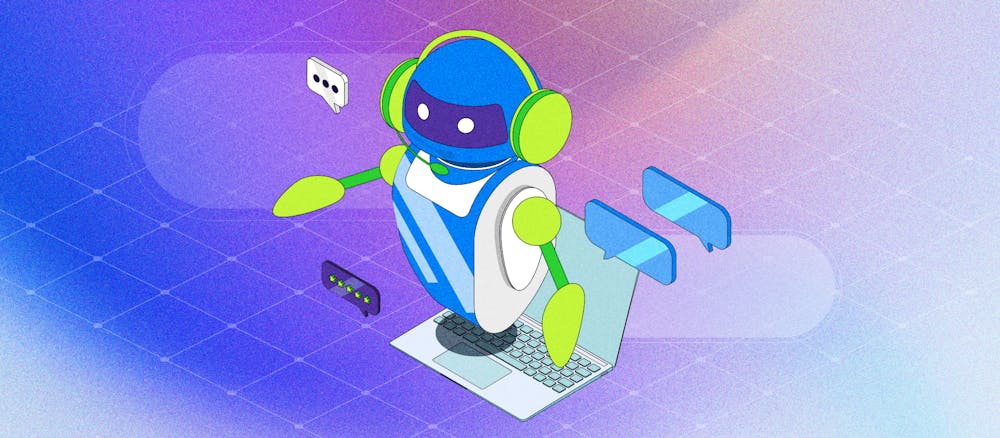In-app notifications: The missing channel in omnichannel
In the rapidly evolving digital communication landscape, businesses continuously explore innovative ways to connect with customers, such as through a chat API, in-app calls, push notifications, or other channels. The shift from traditional SMS to in-app notifications signifies a transformative change, heralding a new era of enhanced user engagement and higher conversion rates.
The longstanding customer communication methods, such as through a chat API, email, push notifications, SMS, and messaging apps, have been pivotal in reaching customers effectively. SMS, in particular, has been lauded for its high open rates, boasting figures like a 98% open rate and a 4.5% higher likelihood of consumer response compared to email.
Yet, these statistics prompt critical questions about the actual value of these open rates, their trackability, and the subsequent consumer actions post-opening. Rather than fixating on these static metrics, businesses should prioritize understanding their consumers’ preferred communication methods and the actions they wish to drive.
In this report, we’ll explore the advantages of in-app notifications over traditional SMS and how companies can craft impactful in-app messages.
SMS falls short
Despite its historical dominance, the efficacy of SMS as an omnichannel tool has waned, marred by issues such as spam, phishing, security concerns, and deliverability problems, leading to a noticeable decline in consumer engagement
“26% of users say they are ignoring SMS messages from businesses more frequently compared to a year ago.” - Arion research and Sendbird online survey 1213 global consumers 18+ (January-February 2023)
“1 - 5% of all SMS messages are lost when nothing is seemingly wrong”
Customer channel preferences for business communication
The pitfalls of push
The limitations of SMS have driven marketers towards push notifications, attracted by their lower costs and initially higher open rates. However, the appeal of push notifications diminishes as consumers opt-out after receiving frequent messages, revealing the channel's limitations in sustaining customer engagement and connection.
“46% of users will opt out of push messages after receiving two to five messages in the same week.”
WhatsApp and popular messaging apps
With over 2 billion users and a CTR of 45-60%, WhatsApp appears to be a strong contender as a channel for reaching consumers. While things seem great, Whatsapp and other popular messaging apps like KakaoTalk have limitations.
The time-consuming message approval process and costs that can surpass those of traditional SMS marketing stand in the way of building relationships with consumers.
All of these issues bring us to the missing channel in omnichannel.
The missing channel in omnichannel
Although many businesses have invested in mobile apps, these are often underutilized, primarily serving as vessels for push notifications. Yet, with 85% of shoppers showing a preference for apps over mobile websites for shopping, the real opportunity lies in leveraging apps for direct communication and information access.
The mobile user journey encapsulates stages from acquisition to referral, presenting multiple touchpoints for in-app engagement, often overlooked in standard omnichannel strategies.
The mobile user journey generally looks like this:
Acquisition → Activation→ Retention → Revenue → Referral
There are dozens of touchpoints to reach your user in the app, similar to a standard notification center they are used to in social media.
Examples:
In-app welcome offer
Multiple offers along the way in upsells
Transaction in-app messages
Update billing information
Ask to share and refer other users to the app
While standard omnichannel communications require coordinated communications that often jump through hoops to reach your audience, in-app notifications allow you to be everywhere at once.
A beta test revealed that:
In-app notifications are ½ the cost of SMS
2x the conversions higher CTR than push alone + SMS
Types of in-app messages to send
It’s not enough to simply send messages to customers. In-app messages should be strategic, driving desired consumer behaviors and fitting seamlessly into the broader customer journey.
Categories like marketing, transactional, and operational messages can be tailored to guide customers through their app experience, enhancing engagement and satisfaction.
Marketing
Ex. Product Launches: Announce new products or services directly within the app, potentially offering users early access or special discounts.

Transactional
Ex. Payment Notifications: Notify users of successful payments, upcoming bills, or any issues with their payment methods.

Operational
Ex. System Updates: Notify users about upcoming maintenance, system updates, or potential downtime.

Considerations for in-app notifications
Structuring in-app strategy for businesses with multiple products
When structuring an in-app strategy, especially for companies with multiple products, it’s crucial to balance the quantity of notifications, ensuring they are manageable and relevant to the user. Remember that consumers will have a ‘tipping point’ when it comes to messages, and too many could lead to customer churn.
To combat this, monitor the level of communication with a single user while implementing filters or tabs to separate various types of notifications. In addition, train the user to regularly check their notification feed inside the app by creating a straightforward customer journey.
Working with user preferences
Personalization is critical to a successful in-app notification strategy. Allowing users to set their preferences for the types of notifications they wish to receive can significantly enhance user satisfaction and engagement.
For example, users can choose to opt out of marketing notifications, while operational notifications will remain mandatory. This approach respects the user’s autonomy and fosters a sense of control, which can lead to increased trust and loyalty towards the app.
Sendbird for in-app notification success
In-app messages should aim to provide an optimal user experience that is persistent, visually engaging, interactive, flexible, and secure. Trusted by 300 million monthly active users
Sendbird allows product managers to use low-code, customizable templates that are ready to launch in days. Marketers will have complete flexibility over design components, layouts, and flow.
Integrations with Braze and CleverTap make it possible to compose rich messages with zero dev support and use existing workflows to send notifications in-app.

Implement Sendbird's robust communication platform to enhance your in-app chat and messaging capabilities. When your business decides that the time is right to build chat, calls, omnichannel business messaging capabilities, Sendbird is ready to provide customer communications solutions - including a chat API and fully customizable AI chatbot - that you can build on. You can send your first message today by creating a Sendbird account to get access to valuable (free) resources with the Developer plan. Become a part of the Sendbird developer community to tap into more resources and learn from the expertise of others. You can also browse our demos to see Sendbird Chat in action. If you have any other questions, please contact us. Our experts are always happy to help!
Want to join the leading companies revolutionizing their services with Sendbird? Start a chat with our sales team today to get started.











